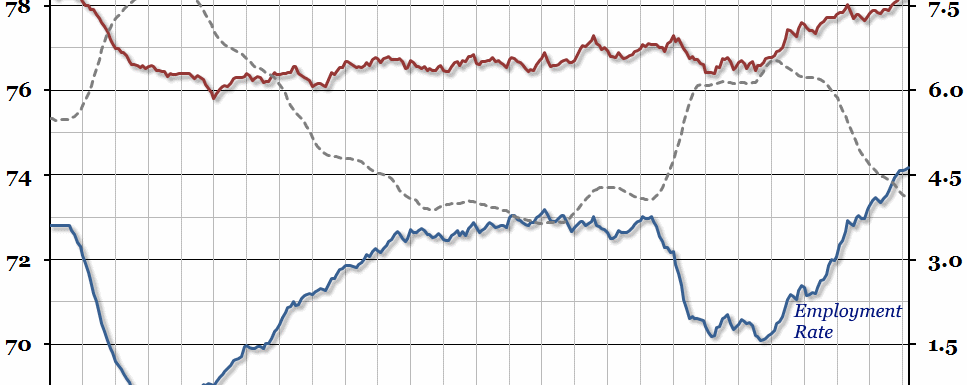
Summary
Today’s labour market statistics (for the first quarter of the year) show that the unemployment rate remained at 5.1%, where it has been since November 2015. After the rapid recovery between 2013 and 2015, this might suggest the UK labour market has reached a natural limit. This week’s chart highlights one reason why.
What does the chart show?
The blue line shows the employment rate (the percentage of the population who are currently in work), measured against the left hand axis, for all people aged between 16 and 64. The red line shows the activity rate (the percentage of the population who are either in work, or are currently unemployed but looking for work) for the same age group, also measured against the left hand axis. The dashed grey line, measured against the right hand axis, shows the difference between these two numbers, averaged over the previous 6 months.
Why is the chart interesting?
The employment rate reached a new high in the first quarter of the year, at 74.2%, while the economic activity rate equalled the previous peak from 1990 (78.3%), driven largely by increasing numbers of 50 to 64 year olds remaining in the labour market. However, the unemployment rate has been broadly static for the past 6 months, while responses to business surveys suggest that companies are finding it increasingly difficult to fill vacancies. One of the best indicators that the labour market has reached its peak is that the gap between the activity rate – the proportion of the population in the labour market – and the employment rate – the proportion of people with a job – has closed to 4.1 percentage points. This is not far from the level experienced between 2000 and 2008 (and in previous boom periods), which suggests that the current unemployment rate may be close to its lower limit.
A certain amount of unemployment is sadly inevitable in even the healthiest economy, as people spend short periods out of work in between jobs. However, other factors likely to be affecting the UK labour market are geographical and skill mismatches: the currently available jobs are either not in the same location as workers looking for jobs who are either unwilling or unable to move, or unemployed workers are not appropriately trained for the jobs that are on offer.

